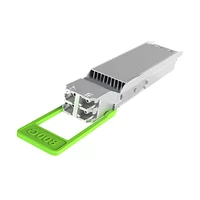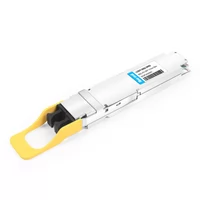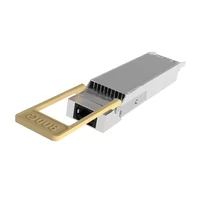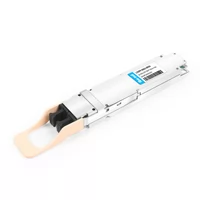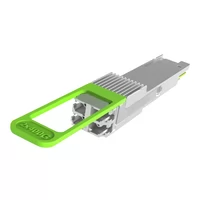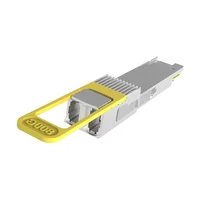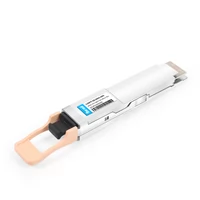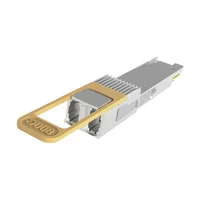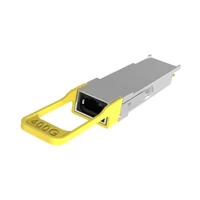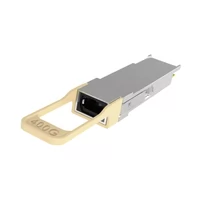The data throughput of switch chips drives the increase of SerDes speed, which also leads to higher power consumption of SerDes. SerDes is the core component of network devices, responsible for connecting optical modules and network switch chips. It converts the parallel data output by the switch chip into serial data for transmission. At the receiving end, it converts the serial data back into parallel data. In the 102.4Tbps era, the SerDes speed needs to reach 224G, and the chip SerDes power consumption is expected to reach 300W. Due to the limitations of PCB material technology, when the SerDes speed increases, the signal transmission distance will be shortened accordingly to ensure high-quality signal transmission. When the SerDes speed reaches 224G, it can only support a maximum of 5-6 inches of transmission distance, which requires the packaging distance between the switch chip and the optical module to be further shortened.
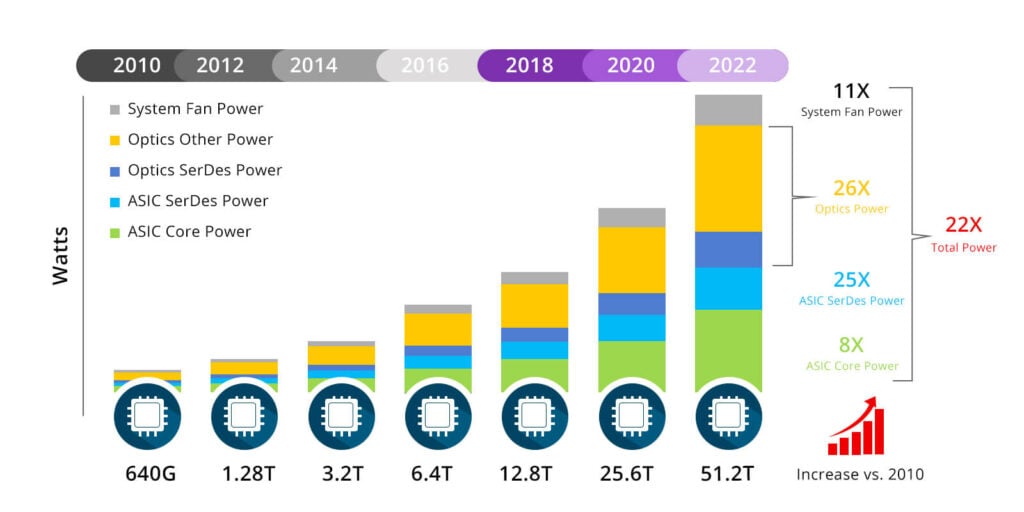
In the current trend of pursuing energy saving and consumption reduction for optical modules, the industry is looking for new methods to reduce the overall power consumption from the four core components: driver, modulator, laser, and electrical interface. When it comes to driver technology, the LPO scheme with linear driving means that it can rely entirely on linear analog components in the data transmission link, without the need for additional complex DSP (digital signal processor) or CDR (clock data recovery) chips, which can effectively avoid the extra power consumption burden caused by these two types of chips.
LPO, or pluggable optical module based on linear driver chip technology, is an optimized innovation of the traditional hot-pluggable Ethernet module with DSP design. The popular 200G, 400G, and even 800G products mostly use PAM4 technology combined with DSP chips to achieve precise recovery and transmission of high-speed and high-density signals. Although DSP has a powerful signal recovery function, which can effectively reduce the bit error rate, compensate for dispersion, filter out noise, suppress nonlinear interference, and other problems, it is challenged by its high cost, large latency, high power consumption, and obvious heat dissipation problem. In contrast, LPO technology greatly improves the linearity of the signal by choosing better-performing TIA (transimpedance amplifier) and Driver chips, thus discarding the DSP in the high-speed module, reducing the overall power consumption of the module, although this change may affect the system’s bit error rate and maximum transmission distance performance to some extent.
In practical applications, the signal from the switch main chip to the optical module will inevitably produce loss, where the high-frequency signal loss is more significant than the low-frequency. This transmission occurs on the copper wire on the PCB board, affected by the “skin effect”, resulting in increased natural loss. To compensate for this loss, DFE (decision feedback equalizer), CDR, and other “non-linear” compensation methods are usually used to improve the signal quality. And DSP chip uses an advanced digital algorithm, which can excellently complete this task, but this also means a higher non-linear operation load, accordingly increasing the power consumption and latency. The core idea of LPO technology is to transfer the complex signal repair work originally undertaken by DSP to the switch system level and let the optical module itself only configure a simple CTLE (continuous time linear equalizer), which is specially for the signal attenuation caused by the transmission channel characteristics to ensure the signal gain in the DC and AC range.
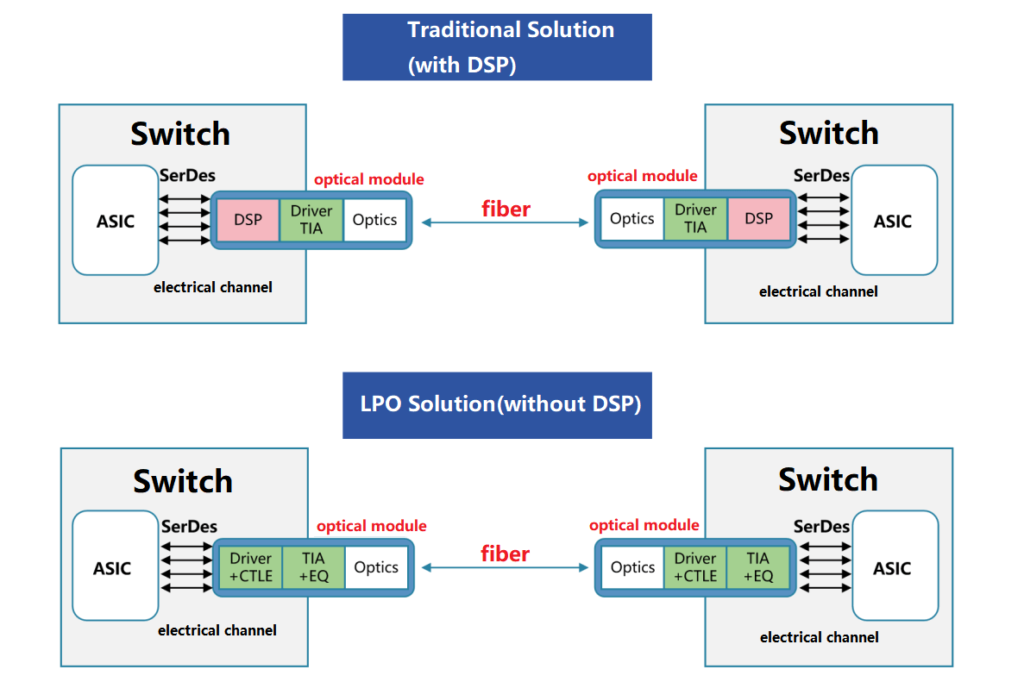
The key challenge of LPO technology is the development and application of electronic chips, which are more suitable for short-distance connection scenarios. The major global electronic chip suppliers such as Macom, Semtech, and Molex have made important contributions in this field. Since LPO technology abandons the advanced signal recovery performance provided by DSP, its application scope is mainly concentrated on short-distance connections within the data center, such as the distance between the server and the top-of-rack switch not exceeding 50 meters. However, with the increasing demand for 800G speed optical modules, LPO technology is expected to gain a larger market share due to its excellent energy-saving characteristics and cost advantages. At the same time, the continuous improvement of the linearity of TIA and Driver chips will further strengthen the integrity of the LPO signal. If a stronger DSP can be matched at the switch chip end, theoretically it can better reduce the signal loss in the link transmission process, thus gradually expanding the application potential of LPO technology in high-speed long-distance transmission while maintaining the low-power consumption advantage.
Related Products:
-
 LOSFP-800G-2FR4L LPO OSFP 2x400G FR4 PAM4 1310nm 2km DOM Dual Duplex LC SMF Optical Transceiver Module
$3500.00
LOSFP-800G-2FR4L LPO OSFP 2x400G FR4 PAM4 1310nm 2km DOM Dual Duplex LC SMF Optical Transceiver Module
$3500.00
-
 LOSFP-800G-DR8D 800G LPO OSFP DR8 PAM4 1310nm 500m DOM Dual MTP/MPO-12 SMF Optical Transceiver Module
$1800.00
LOSFP-800G-DR8D 800G LPO OSFP DR8 PAM4 1310nm 500m DOM Dual MTP/MPO-12 SMF Optical Transceiver Module
$1800.00
-
 LOSFP-800G-SR8 LPO OSFP 8x100G SR8 PAM4 850nm MTP/MPO-16 50m OM4 MMF FEC Optical Transceiver Module
$1100.00
LOSFP-800G-SR8 LPO OSFP 8x100G SR8 PAM4 850nm MTP/MPO-16 50m OM4 MMF FEC Optical Transceiver Module
$1100.00
-
 LOSFP-800G-SR8D LPO OSFP 8x100G SR8 PAM4 850nm 50m DOM Dual MPO-12 MMF Optical Transceiver Module
$1000.00
LOSFP-800G-SR8D LPO OSFP 8x100G SR8 PAM4 850nm 50m DOM Dual MPO-12 MMF Optical Transceiver Module
$1000.00
-
 LQSFP-DD-800G-2FR4L LPO QSFP-DD800 2x400G FR4 PAM4 CWDM4 2km DOM Dual Duplex LC SMF Optical Transceiver Module
$1800.00
LQSFP-DD-800G-2FR4L LPO QSFP-DD800 2x400G FR4 PAM4 CWDM4 2km DOM Dual Duplex LC SMF Optical Transceiver Module
$1800.00
-
 LQSFP-DD-800G-DR8D 800G LPO QSFP-DD800 DR PAM4 1310nm 500m DOM Dual MPO-12 SMF Optical Transceiver Module
$1500.00
LQSFP-DD-800G-DR8D 800G LPO QSFP-DD800 DR PAM4 1310nm 500m DOM Dual MPO-12 SMF Optical Transceiver Module
$1500.00
-
 LQSFP-DD-800G-SR8 800G SR8 LPO QSFP-DD 850nm 50m OM3 MMF MPO-16 Optical Transceiver Module
$1300.00
LQSFP-DD-800G-SR8 800G SR8 LPO QSFP-DD 850nm 50m OM3 MMF MPO-16 Optical Transceiver Module
$1300.00
-
 LQSFP-DD-800G-SR8D 800G SR8 LPO QSFP-DD 850nm 50m OM3 MMF 2xMPO-12 Optical Transceiver Module
$1300.00
LQSFP-DD-800G-SR8D 800G SR8 LPO QSFP-DD 850nm 50m OM3 MMF 2xMPO-12 Optical Transceiver Module
$1300.00
-
 LQSFP112-400G-DR4 400G LPO QSFP112 DR4 PAM4 1310nm 500m MTP/MPO-12 with KP4 FEC Optical Transceiver Module
$1200.00
LQSFP112-400G-DR4 400G LPO QSFP112 DR4 PAM4 1310nm 500m MTP/MPO-12 with KP4 FEC Optical Transceiver Module
$1200.00
-
 LQSFP112-400G-SR4 400G LPO QSFP112 SR4 PAM4 850nm 50m MTP/MPO-12 OM3 FEC Optical Transceiver Module
$800.00
LQSFP112-400G-SR4 400G LPO QSFP112 SR4 PAM4 850nm 50m MTP/MPO-12 OM3 FEC Optical Transceiver Module
$800.00

